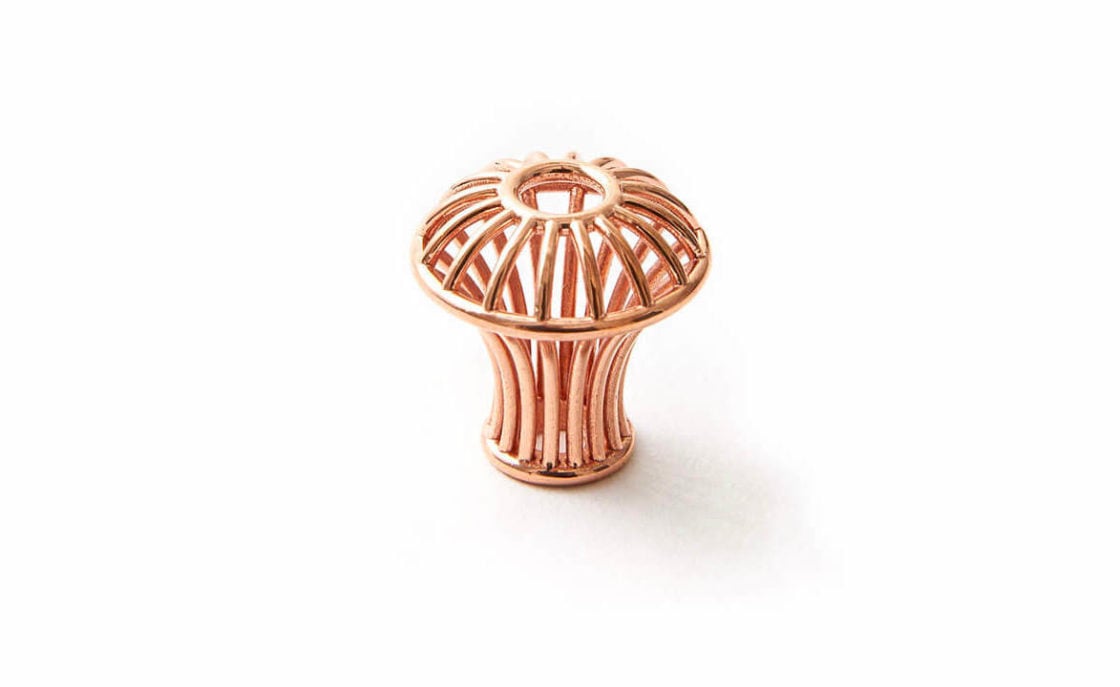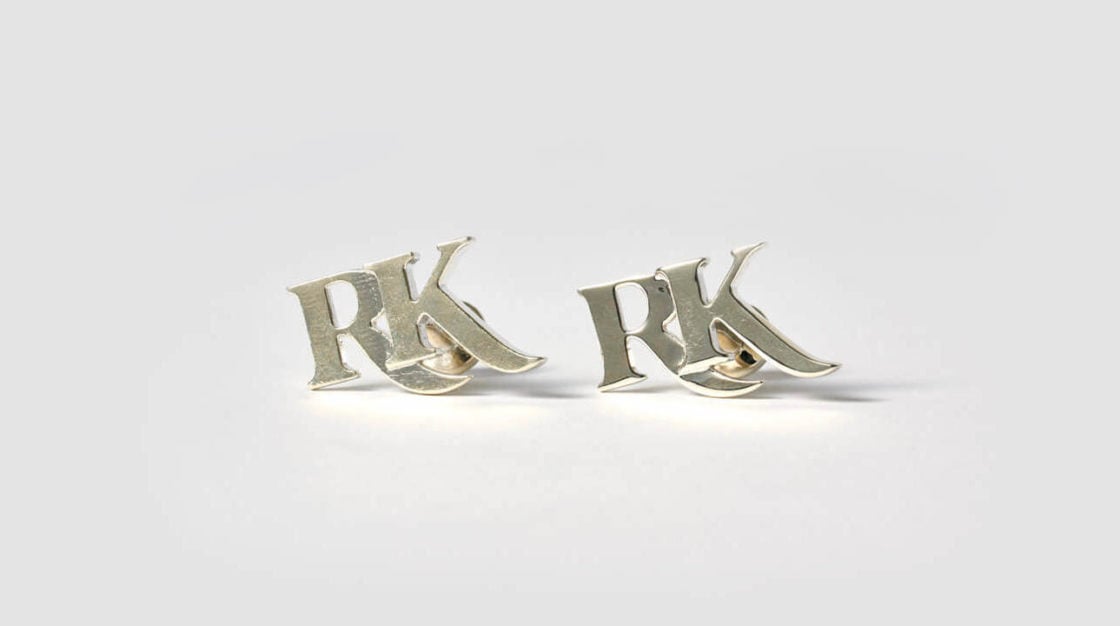
For designers and engineers eager to try a variation on metal 3D printing technology–but with a fast and more economical edge–Lost Wax Casting is a great option. Paired with high-quality 3D print Lost Wax Casting materials and precious metals like Gold and Platinum, this technique is preferred by many Shapeways customers.
Also referred to as Investment Casting, Precision Casting, or even cire perdue (french), this unique technology has historically been recognized as a strong suit for foundries. Created around 5,000 years ago to make metal products and ammunition, Lost Wax Casting is performed in most instances by pouring red-hot, liquid metal into molds to create structures.
Materials for 3D Printing Molds
Fast forward to the present, and many are surprised to find out that the 3D printed molds for Lost Wax Casting are made out of a variety of different 3D printing materials, to include the following:
- Nylon 12 [Versatile Plastic] – This thermoplastic is popular for 3D printing parts with Selective Laser Sintering (SLS), as well as making a wide range of 3D printed molds for Wax Casting industrial parts, jewelry, and technical accessories.
- MJF Plastic PA12 – Another well-rounded and popular 3D printing material, MJF PA12 is also used via Multi Jet Fusion to create molds for 3D printing master patterns.
- Steel and Stainless Steel – Shapeways offers metal powders for creating a variety of useful 3D printed Wax Casting molds.
- Sandstone – Although this 3D printing material is known to be more brittle and requires special handling, it is used for creating fast, economical molds.
- Thermoplastic Polyurethane (TPU) – 3D printed with SLS technology, TPU is often used as a substitute for silicone in making Wax Casting molds, because the material is so flexible.

The Benefits of 3D Printed Lost Wax Casting
Wax inserts are most often used, structuring the interior of each mold. Once liquid metal is introduced to the mold for making the desired structure, all the wax melts and is drained out. With 3D printing, the cooling process is more stable, and once complete, the solidified metal part can be removed. From there, each casting is an exact replication of the previous one. If the mold needs to be altered, a 3D design can be modified, 3D printed again, and allows for further perfection of any wax-casted part.
While traditionally molds have been made with conventional methods for technology like Wax Casting or Injection Molding, 3D printing molds are useful for low-volume, economical production, and can be made in a fraction of the time required for traditional mold making. All the classic benefits of 3D printing are present in this process too. Tremendous freedom in design and production is allowed in making molds and consequent parts. Complex geometries can be designed and 3D printed, featuring cavities and other intricate details desired for prototypes or end parts being cast in metal. Speed in production is a huge bonus for any manufacturer too, due to advanced 3D printing technology, 3D printing materials, and little to no requirements for lead time.
Industrial Applications for Lost Wax Casting
3D printing provides the opportunity to perfect parts with rapid prototyping, and 3D printed molds for Lost Wax Casting are no exception to the rule. Because 3D models can be designed and 3D printed quickly, Shapeways customers enjoy a broad iteration process. While product development may be streamlined so that only a handful of iterations are necessary, other customers may be experimenting with so many different details that over a hundred prototypes are necessary. In comparing additive manufacturing vs. traditional manufacturing during this process, however, 3D printing is beneficial all around in terms of speed and cost.
3D printing has evolved into a technology that manufacturers rely on for functional, end-use parts. 3D printing molds have promoted this growth, especially as they have become more common in foundries. Parts manufactured via Lost Wax Casting are used in industrial applications like medicine, for creating orthopedic devices. In robotics, casting is used to manufacture robotic arms and integrated electronics.
Aerospace manufacturers employ 3D printed molds to create functional prototypes for testing to ensure exact form and fit, and then may also go on to make end-use parts. 3D printed drone frames are a great example for designers and engineers testing and making highly customized, smaller components in moderate volumes. 3D printed molds are also used in foundries to create critical mechanical parts and components for construction equipment.

Precious Metals for Lost Wax Casting:
Wax casting is known for professional-looking, detailed parts with superb finishing. Shapeways offers the following metal materials for Wax Casting:
- Brass – An alloy made up of 15% zinc, 5% tin, and 80% copper, Brass is available with a natural matte finish or a shiny polish, and is also offered with Gold Plating or Rhodium Plating.
- Bronze – A copper-tin alloy made up of 10% tin and 90% copper, Bronze is often used for jewelry with a vintage appearance, featuring a deep red color, marbling, and silver highlights. Bronze materials are available in natural matte or polished finishes.
- Copper – Featuring a red-orange color that oxidizes over time, turning to a deeper color, Copper is often desired for its corrosion-resistant properties. This material is available in a natural or polished finish.
- Gold – Both 14-carat and 18-carat gold are available in yellow, white, and rose. Intricate designs can be made for valuable parts or fine jewelry with this precious metal.
- Platinum – One of the highest quality metal materials available, Platinum is a white metal used for luxury products. This material is available in a professional finish.
- Silver – A high-quality alloy, Silver tends to be more malleable, and is popular in the jewelry industry. Silver is offered with the following finishes: natural, polished, fine-detail polished, and antique.
Lost Wax Casting for Jewelry
Many cast-metal products from Shapeways are jewelry, whether as one-of-a-kind pieces, in smaller volumes for boutique designers, or larger companies making a wide range of pieces. Materials like Silver, Gold, and Platinum are most popular with jewelry designers who focus on the conceptualizing and designing of 3D models while leaving the manufacturing to Shapeways.
Numerous jewelry designers have worked with Shapeways for years and in time have evolved right along with our company, honing design skills and knowledge of production, as well as experimenting with a wide variety of different materials and post-processing details like tumbling, polishing, or plating with materials like Gold and Rhodium.

On-demand 3D printing for Jewelers and All Manufacturers
Designers have vast opportunities for customization, coupled with the opportunity to take advantage of on-demand production–one of the greatest benefits built into 3D printing technology. Entire inventories can be managed on a single digital file, in comparison to traditional warehouses holding large stores of parts. On-demand 3D printing allows for streamlined production with reduced assemblies for larger industrial parts, efficiency in time to market, and continued security in uploading, maintaining, and storing files.
Shapeways works with businesses of all types and sizes for on-demand 3D printing, allowing them to eliminate product backlogs and prevent supply chain issues.
About Shapeways
Enjoy the benefits of this advanced technology and a wide range of materials from Shapeways for 3D printing your creations with accuracy, complex detail, and no minimum or limits in terms of mass customization or single part orders. Shapeways has worked with over 1 million customers in 160 countries to 3D print over 21 million parts! Read about case studies, find out more about Shapeways additive manufacturing solutions, and get instant quotes here.


